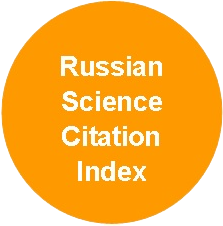Nitration of Hydrolysis Lignin with Nitric Acid in Dimethyl Sulfoxide and Water
DOI:
https://doi.org/10.37482/0536-1036-2025-4-185-201Keywords:
lignin, hydrolysis lignin, Klason lignin, oxidative nitration, dimethyl sulfoxide, depolymerization, delignification, kineticsAbstract
Hydrolysis lignin is a by-product which is an insoluble residue formed after the hydrolysis of polysaccharides of lignocellulosic materials for further processing of the resulting monosaccharides into bioethanol or other products. Hydrolysis lignin, unlike other technical lignins, is insoluble in water and organic solvents, and also contains non-hydrolysed cellulose, extractive and mineral substances. Finding ways to rationalize the use of this by-product for the production of chemicals is an urgent task, the solution to which will increase the economic attractiveness of the cellulosic bioethanol technologies. In this work, the nitration of hydrolysis lignin with nitric acid in a mixture with and without dimethyl sulfoxide during heating has been investigated, which allows the lignin part to be converted into water-soluble products upon alkalization. Klason lignin has been used as a model of hydrolysis lignin that does not contain a cellulose component. Using electron spectroscopy, the formation of water-soluble products from lignin has been monitored, and the water-soluble products have been subject to degradation in the reaction mixture. For Klason lignin, a solvent-nitric acid mixture composition has been selected, which allows preserving the structure of lignin. Based on the mass values of residues during nitration of hydrolysis lignin, kinetic dependences of the course of its delignification have been constructed and the observed rate constants have been calculated by describing the process using 1st-order kinetic equations at 60...100 °C. The activation energies of the delignification of hydrolysis lignin in the case of using dimethyl sulfoxide as a co-solvent and without it have been 96 and 86 kJ/mol, respectively. Upon nitration of hydrolysis lignin, water-soluble products have been formed, containing 3 fractions with the following molecular mass values: less than 103, 103...104 and more than 104 g/mol. In this case, during the nitration process, the content of the last fraction has decreased due to the depolymerizing effect of nitric acid. An increase in the proportion of nitric acid in the mixture has led to a stronger depolymerization of lignin macromolecules, as a result of which the nitration products of hydrolysis lignin have lacked a fraction of more than 104 g/mol, and the 2 fractions with lower molecular mass values have shifted towards low molecular mass values.
Downloads
References
Беловежец Л.А., Волчатова И.В., Медведева С.А. Перспективные способы переработки вторичного лигноцеллюлозного сырья // Хим. раст. сырья. 2010. No 2. С. 5–16. Belovezhets L.A., Volchatova I.V., Medvedeva S.A. Promising Methods for Processing Secondary Lignocellulosic Raw Materials. Khimija Rastitel’nogo Syr’ja, 2010, no. 2, pp. 5–16. (In Russ.).
Белькова Л.П., Громов В.С., Михайлов А.И. Полихронная кинетика процессов делигнификации древесины. 1. Процесс азотнокислотной делигнификации // Хим. древ. 1980. No 6. С. 50–58. Bel’kova L.P., Gromov V.S., Mikhailov A.I. Polychronic Kinetics of Wood Delignification Process. 1. Nitric Acid Delignification Process. Khimiya drevesiny, 1980, no. 6, pp. 50–58. (In Russ.).
Белькова Л.П., Громов В.С., Михайлов А.И. Полихронная кинетика процессов делигнификации древесины. 2. Диффузионная кинетика азотнокислотной делигнификации // Хим. древ. 1980. No 6. С. 59–64. Bel’kova L.P., Gromov V.S., Mikhailov A.I. Polychronic Kinetics of Wood Delignification Process. 2. Diffusion Kinetics of Nitric Acid Delignification. Khimiya drevesiny, 1980, no. 6, pp. 59–64. (In Russ.).
Горбунова О.Ф., Боголицына Г.М., Кочергина Г.Г. О делигнификации с азотной кислотой // Изв. вузов. Лесн. журн. 1991. No 3. С. 89–95. Gorbunova O.F., Bogolitsyna G.M., Kochergina G.G. On Delignification with Nitric Acid. Lesnoy Zhurnal = Russian Forestry Journal, 1991, no. 3, pp. 89–95. (In Russ.).
Евстигнеев Э.И., Юзихин О.С., Гуринов А.А., Иванов А.Ю., Артамонова Т.О., Ходорковский М.А., Бессонова Е.А., Васильев А.В. Химическое строение и физико-химические свойства окисленного гидролизного лигнина // Журн. приклад. химии. 2015. Т. 88, No 8. С. 175–183. Evstigneyev E.I., Yuzikhin O.S., Gurinov A.A., Ivanov A.Yu., Artamonova T.O., Khodorkovskii M.A., Bessonova E.A., Vasil’ev A.V. Chemical Structure and Physicochemical Properties of Oxidized Hydrolysis Lignin. Zhurnal prikladnoj khimii = Russian Journal of Applied Chemistry, 2015, vol. 88, pp. 1295–1303. https://doi.org/10.1134/S107042721508011X
Иванов В.И., Чуксанова А.А., Сергеева Л.Л. Нитрование гидролизного лигнина // Изв. АН СССР. Сер.: Хим. 1957. Т. 6, No 4. С. 503–508. Ivanov V.I., Chuksanova A.A., Sergeeva L.L. Nitration of Saccharification Lignin. Izvesitiya Akademii nauk SSSR. Seriya: Khimicheskaya = Russian Chemical Bulletin, 1957, vol. 6, pp. 513–518. https://doi.org/10.1007/BF01171974
Капустина И.Б., Москальчук Л.Н., Матюшонок Т.Г., Позылова Н.М., Хололович М.Е. Исследование гидролизного лигнина в целях возможного использования в качестве мелиорант-сорбента для реабилитации загрязненных радионуклидами почв // Химия в интересах устойчивого развития. 2006. No 1. С. 17–22. Kapustina I.B., Moskalchuk L.N., Matyushonok T.G., Pozylova N.M., Khololovich M.E. Investigation of Hydrolysis Lignin for the Purpose of its Possible Use as a Land Reclamation Sorbent for Rehabilitation of Soils Polutted with Radionuclides. Khimiya v interesakh ustojchivogo razvitiya = Chemistry for Sustainable Development, 2006, vol. 14, no. 1, pp. 13–18.
Романенко К.А., Богданович Н.И., Канарский А.В. Получение активных углей пиролизом гидролизного лигнина // Изв. вузов. Лесн. журн. 2017. No 4. С. 162–171. Romanenko K.A., Bogdanovich N.I., Kanarskiy A.V. Obtaining of Activated Carbons by Pyrolysis of Hidrolytic Lignin. Lesnoy Zhurnal = Russian Forestry Journal, 2017, no. 4, pp. 162–171. (In Russ.). https://doi.org/10.17238/issn0536-1036.2017.4.162
Сорокин В.И., Бакина Г.Г. Особенности делигнификации древесины различных пород при взаимодействии с растворами азотной кислоты // Хим. древ. 1980. No 5. С. 53–59. Sorokin V.I., Bakina G.G. Features of Delignification of Wood of Different Species during Interaction with Nitric Acid Solutions. Khimiya drevesiny, 1980, no. 5, pp. 53–59. (In Russ.).
Хабаров Ю.Г., Лахманов Д.Е. Деполимеризация конденсированных лигнинов под действием азотной кислоты // Изв. вузов. Лесн. журн. 2014. No 5. С. 173–181. Habarov U.G., Lakhmanov D.E. Depolymerization of Condensed Lignins with Hydrogen Nitrate. Lesnoy Zhurnal = Russian Forestry Journal, 2014, no. 5, pp. 173–181. (In Russ.).
Хабаров Ю.Г., Лахманов Д.Е., Косяков Д.С., Ульяновский Н.В. Изучение продуктов реакции гидролизного лигнина с азотной кислотой // Изв. АН. Сер.: Хим. 2016. Т. 65, No 1. C. 237–244. Khabarov Yu.G., Lakhmanov D.E., Kosyakov D.S., Ul’yanovskii N.V. Studies of Reaction Products of Hydrolytic Lignin with Nitric Acid. Izvesitiya Akademii nauk. Seriya: Khimicheskaya = Russian Chemical Bulletin, 2016, vol. 65, pp. 237–244. https://doi.org/10.1007/s11172-016-1291-5
Aditiya H.B., Mahlia T.M.I., Chong W.T., Nur H., Sebayang A.H. Second Generation Bioethanol Production: A Critical Review. Renewable and Sustainable Energy Reviews, 2016, vol. 66, pp. 631–653. https://doi.org/10.1016/j.rser.2016.07.015
Ahmad Z., Paleologou M., Xu C.C. Oxidative Depolymerization of Lignin Using Nitric Acid under Ambient Conditions. Industrial Crops and Products, 2021, vol. 170, art. no. 113757. https://doi.org/10.1016/j.indcrop.2021.113757
Bergna D., Varila T., Romar H., Lassi U. Activated Carbon from Hydrolysis Lignin: Effect of Activation Method on Carbon Properties. Biomass and Bioenergy, 2022, vol. 159, art. no. 106387. https://doi.org/10.1016/j.biombioe.2022.106387
Danielewicz D. Nitric Acid-Alkali Two-Stage Pulping of Wheat Straw, Industrial Hemp, and Miscanthus x giganteus. BioResources, 2023, vol. 18, iss. 4, pp. 7629–7644. https://doi.org/10.15376/biores.18.4.7629-7644
Hemmilä V., Hosseinpourpia R., Adamopoulos S., Eceiza A. Characterization of Wood-Based Industrial Biorefinery Lignosulfonates and Supercritical Water Hydrolysis Lignin. Waste and Biomass Valorization, 2020, vol. 11, pp. 5835–5845. https://doi.org/10.1007/s12649-019-00878-5
Khan N., Sudhakar K., Mamat R. Role of Biofuels in Energy Transition, Green Economy and Carbon Neutrality. Sustainability, 2021, vol. 13, no. 22, art. no. 12374. https://doi.org/10.3390/su132212374
Khvan A.M., Abduazimov B.B., Abduazimov Kh.A. Nitration of Lignin and Sorptive Properties of the Resulting Products. Chemistry of Natural Compounds, 2002, vol. 38, pp. 471–472. https://doi.org/10.1023/A:1022128130251
Kozhevnikov A.Yu., Semushina M.P., Podrukhina E.A., Kosyakov D.S. Modification of Hydrolysis Lignin by Hydrogen Peroxide to Obtain an Effective Adsorbent of Highly Toxic Rocket Fuel. Eurasian Chemico-Technological Journal, 2017, vol. 19, no. 2, pp. 155–161. https://doi.org/10.18321/ectj646
Lo C.-C., Chang Y.-W., Chen Y.-L., Liu Y.-L., Wu H.-S., Sun Y.-M. Lignin Recovery from Rice Straw Biorefinery Solid Waste by Soda Process with Ethylene Glycol as Co-Solvent. Journal of the Taiwan Institute of Chemical Engineers, 2021, vol. 126, pp. 50–57. https://doi.org/10.1016/j.jtice.2021.07.030
Menezes F.F., Nascimento V.M., Gomes G.R., Rocha G.J.M., Strauss M., Junqueira T.L., Driemeier C. Depolymerization of Enzymatic Hydrolysis Lignin: Review of Technologies and Opportunities for Research. Fuel, 2023, vol. 342, art. no. 127796. https://doi.org/10.1016/j.fuel.2023.127796
Pan C., Ji Y., Ren S., Lei T., Dong L. Lignin-Derived Activated Carbon as Electrode Material for High-Performance Supercapacitor. Molecules, 2025, vol. 30, no. 1, art. no. 89. https://doi.org/10.3390/molecules30010089
Popescu C., Dissanayake H., Mansi E., Stancu A. Eco Breakthroughs: Sustainable Materials Transforming the Future of Our Planet. Sustainability, 2024, vol. 16, no. 23, art. no. 10790. https://doi.org/10.3390/su162310790
Rabinovich M.L. Lignin By-Products of Soviet Hydrolysis Industry: Resources, Characteristics, and Utilization as a Fuel. Cellulose Chemistry and Technology, 2014, vol. 48, no. 7–8, pp. 613–631.
Ruwoldt J., Tanase-Opedal M., Syverud K. Ultraviolet Spectrophotometry of Lignin Revisited: Exploring Solvents with Low Harmfulness, Lignin Purity, Hansen Solubility Parameter, and Determination of Phenolic Hydroxyl Groups. ACS Omega, 2022, vol. 7, iss. 50, pp. 46371–46383. https://doi.org/10.1021/acsomega.2c04982
Sethupathy S., Morales G.M., Gao L., Wang H., Yang B., Jiang J., Sun J., Zhu D. Lignin Valorization: Status, Challenges and Opportunities. Bioresource Technology, 2022, vol. 347, art. no. 126696. https://doi.org/10.1016/j.biortech.2022.126696
Smith B.C. Organic Nitrogen Compounds X: Nitro Groups, an Explosive Proposition. Spectroscopy, 2020, vol. 35, no. 9, pp. 27–31.
Smith B.C. The C=O Bond, Part III: Carboxylic Acids. Spectroscopy, 2018, vol. 33, iss. 1, pp. 14–20.
Vishtal A., Kraslawski A. Challenges in Industrial Applications of Technical Lignins. BioResources, 2011, vol. 6, iss. 3, pp. 3547–3568. http://dx.doi.org/10.15376/biores.6.3.vishtal
Walker G.M. 125th Anniversary Review: Fuel Alcohol: Current Production and Future Challenges. Journal of the Institute of Brewing, 2011, vol. 117, iss. 1, pp. 3–22. https://doi.org/10.1002/j.2050-0416.2011.tb00438.x













